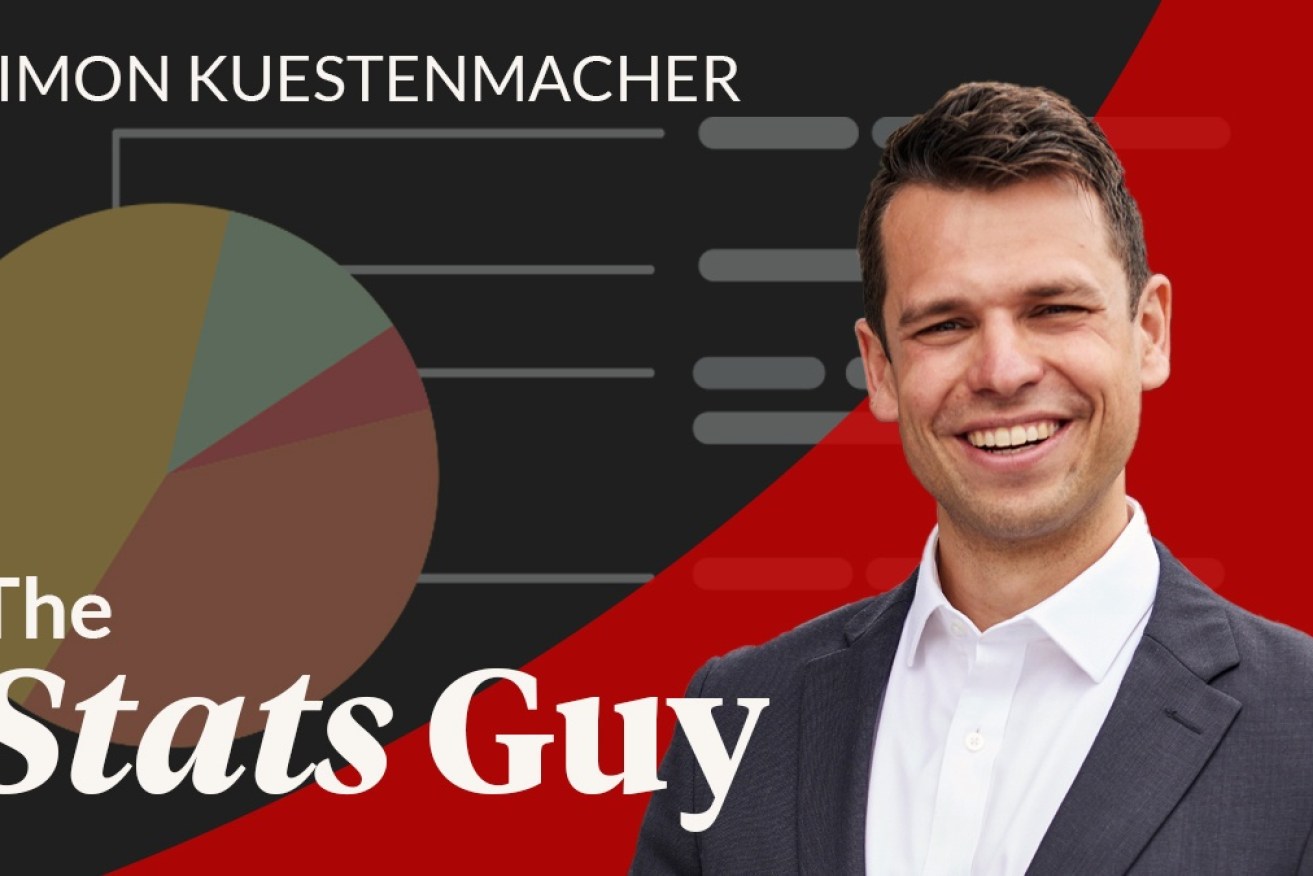The Stats Guy: What the budget tells us about the future of migration in Australia


Our stats expert Simon Kuestenmacher has examined the budget for some insight into future migration trends. Photo: TND
Reading through federal budget papers isn’t considered the most exciting way to spend an evening by most people.
As your Stats Guy I enthusiastically downloaded the documents on Tuesday night and scrolled to the technical notes. This is where the important assumptions made in the budget are listed. I am only interested in one thing: The net migration projections for the coming five years.
These numbers need to be consumed with a bit of caution though. Any treasurer will be tempted to exaggerate net migration figures. If you write yourself thousands of additional migrants into your spreadsheet you have magically created money that you can hand out on fun stuff like infrastructure or social benefits.
Nobody loves migrants more than the Treasurer. Remember the 2019-20 Budget? The famous ‘Back in black’ budget? Two weeks before the budget the Prime Minister announced a reduction in migration – a somewhat desperate move to please the right wing of his party, an attempt to win an election that looked all but lost.
The fine print in the budget then revealed migration assumptions that were way above the recently announced migration figures – higher in fact than the previous cap. Without exaggerating migration numbers, the 2019-20 budget figures couldn’t possibly have made the ‘back in black’ claim.
Then the pandemic hit, and all budgeting was null and void anyway. There would, however, never have been a black budget even without the pandemic.
Before we look at the net migration assumptions in the current budget, we need to quickly review the last 120 years of Australia’s migration history. Buckle up for a super-quick history of migration.
In the early 1910s, revolts in Europe led to the first major wave of migration to Australia in the 20th century.
The biggest-ever outflow of migrants occurred during WWI when ANZACs departed for the European and Middle East theatres of war.
Right after WWI the return of the ANZACs, coupled with European refugees, resulted in record migration intake numbers. Moderate migrant intake occurred until the Great Depression of the 1920s and 1930s.
Before the end of WWII Australia saw almost no migration movement whatsoever. Just after WWII migration figures dropped into the negatives again when US soldiers stationed in Australia returned home.
From the 1950s to 2000 Australia grew its population by around 90,000 migrants per year on average. There were, of course, phases of relatively higher and relatively lower migration intake. The dip around the mid-1970s, for example, was (as well as the introduction of the contraceptive pill and no-fault-divorce) the reason why Gen X is an exceptionally small generation. From 2000 to 2019 Australia doubled its migrant intake to an average of 195,000 per year.
The peak occurred in the 2008-09 financial year when 300,000 migrants came to Australia during the mining boom. The record intake of 2008 ignited the Big Australia debate anew. Migration was quoted as being responsible for all societal ills – congestion, house prices, lack of social cohesion.
That’s a bit too simplistic in my book. In urban planning circles we say that there isn’t a population size or population density that is simply too much for a system to cope with – there is always only inappropriate physical and social infrastructure.
The dramatic mistake that Australia allowed itself to commit during the 2000s and 2010s was to grow population at a faster rate than infrastructure. An additional problem that regions with very high population growth rates face is that the agile private sector can provide housing quickly while the not-quite-as-agile public sector tends to provide infrastructure at a much slower pace.
When the pandemic hit, Australia lost migrants in net terms for the first time in 75 years. Instead of adding 195,000 migrants, Australia lost around 90,000 – in net terms that translates to a loss of 285,000 people.
Instead of tanking, the Australian housing market shot up to record highs. Blaming migrants for these highs wasn’t an option this time around. The general mood in Australia shifted back towards pro-migration policies. How else could we possibly fill all these vacant jobs that industry is complaining about?
In times of record low unemployment figures, migrants aren’t blamed for stealing jobs but are seen as desperately needed.
This brings us back to the budget. All industries lobby for professions their sector lacks to be added to the skilled migration list. About 90,000 spaces for skilled migrants will be made available after about 10,000 spaces were reallocated from the family visa category. The high migration assumptions in the budget are welcome, but are they realistic?
The previous two pandemic budgets in 2020 and 2021 assumed that the negative net migration figures from the first COVID year were going to be followed by another year of negative migration. I was positively surprised to see that the 2021-22 financial year is projected to conclude with positive net migration.
Before COVID, a net intake of 41,000 migrants would have been seen as very low – now it is the beginning of a rapid V-shaped recovery. Since the opening of international borders in December the stock of temporary migrants (driven mostly by the return of international students) increased by around 98,000.
The budget assumptions of a net-positive migration in 2021-22 seem very believable. The assumptions for the next few years also don’t seem too far off the mark considering that the international demand for migration to Australia probably remains high enough to easily fill up to 235,000 spots (that’s the assumption for 2025 and 2026).
In case you are worrying that the new surge in migration will lead to higher house prices, rest assured. The new migrants will almost exclusively be international students and skilled migrants largely moving into the weak inner-city rental markets. The market can easily absorb a few hundred thousand migrants.
We are good for a year or two, but let’s not get lazy again this time around.








